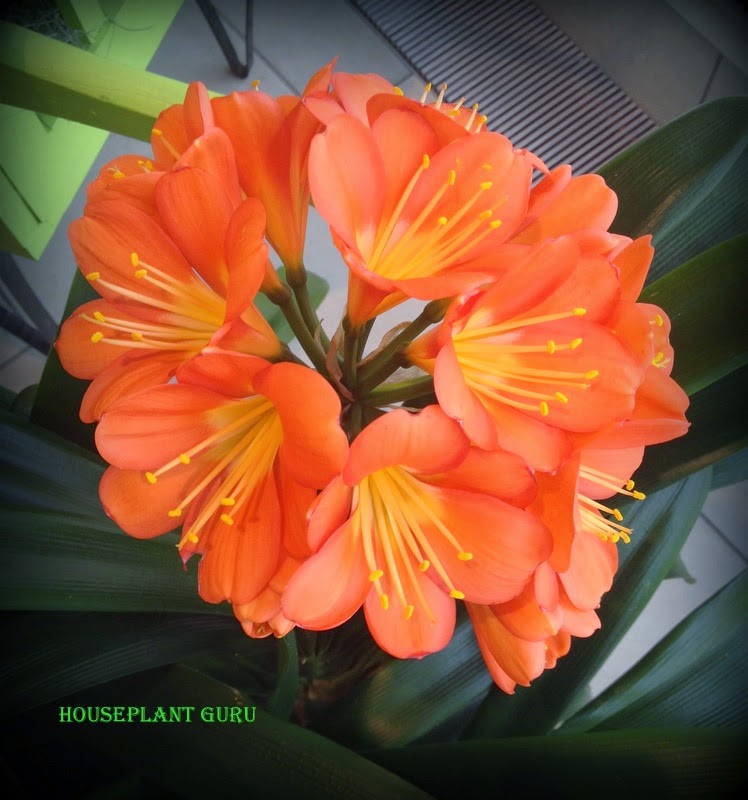 |
| Clivia in bloom at Krohn Conservatory in Cleveland, Ohio |
 |
| My Clivia on March 12th, 2015 |
 |
| My Clivia on March 20th, 2015 |
 |
| My Clivia on March 30th, 2015 |
Clivias are from warm, moist forests of South Africa. It has the common names of Fire and Natal Lily. The name fire lily is obvious, and the Natal lily is so called because it is from the Natal region in South Africa. The one you are most likely to find is Clivia miniata. Most have orange flowers, but yellow is also available. The yellow flowering varieties were very rare not so long ago, and very expensive. Now they are more available and definitely more affordable. They are in the Amaryllidaceae family, closely related to Amaryllis or Hippeastrum. The leaves look just like amaryllis leaves and they are both monocots. Monocots have foliage with parallel veins and include plants such as orchids, lilies, daffodils, iris, tulips, and cannas. Clivias are clump forming with dark leathery, long leaves and make great houseplants, because they reside in the shade in their native habitat. To initiate flowering they must have bright light in our homes. They have very thick, fleshy roots and are best left undisturbed until they are almost breaking the pot. They hate to be re-potted and divided and may not bloom the year after re-potting. Use a very well drained soil to replicate their native soil conditions. If the potting mix is kept too wet it will result in rot which will appear as pale green or bright orange cankers on the leaves. The Clivia would prefer to be on the dry side because of its fleshy roots.
 |
| Clivia at Krohn Conservatory in Cleveland, Ohio |
I'm still not sure exactly how I got my plant to bloom, but I'm not complaining, and hopefully it will bloom again next year.
 |
| Close up of an individual flower |

 |
| Yellow Clivia at Longwood Gardens, PA |
This yellow Clivia is beautiful at Longwood Gardens. I had never seen one before. The yellow is gorgeous, but I prefer the orange. Then again, I wouldn't turn one down.
 |
| Variegated Clivia at Longwood Gardens, PA |
Who wouldn't love the variegated foliage of this Clivia on the right. I wouldn't care if it never bloomed. While researching this plant, I found the site of the North American Clivia Society.There are some beautiful plants on their site. Check it out.
 |
| Clivia in bloom at Longwood Garden, PA |

What a beautiful plant!
ReplyDeleteThanks for sharing!
So, maybe there is still hope for me. A friend, who has had great luck with hers, gave me one-probably ten years ago and it is a healthy green plant, never even threatening to bloom. It doesn't get a lot of light, but is in the only place I have to keep it. It lives outside on my deck in good light, but not direct sun in the summer time. Don't think I overwater.
ReplyDelete